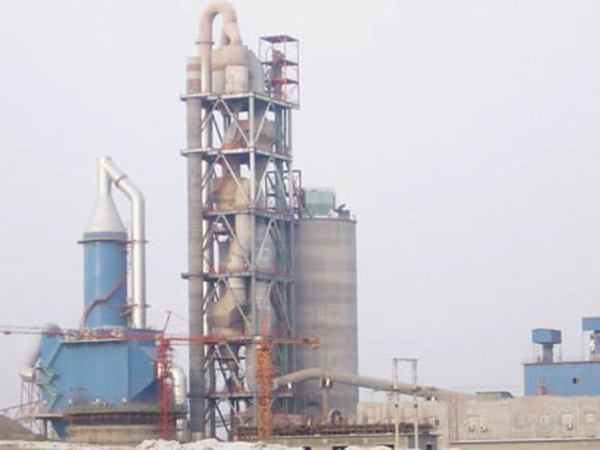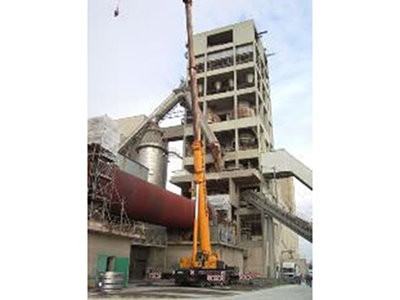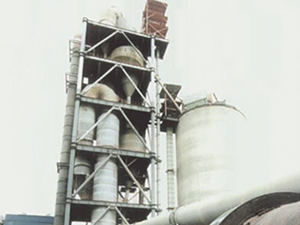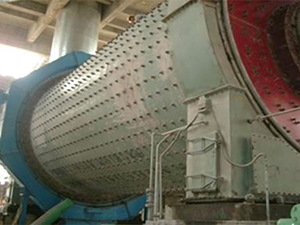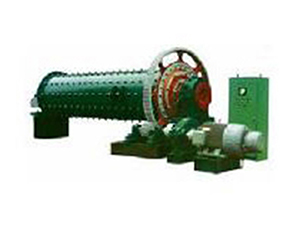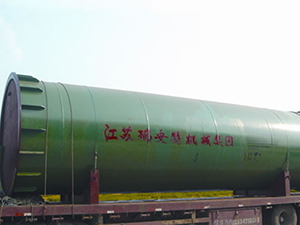Cement Production Line
The cement production line is composed of a great variety of equipment, including rotary kiln, sintering furnace, ball mill, cement mill, dryer, granulating machine, crushing machine, dust collector, plate feeder, humidifying tower, bucket elevator, screw conveyor, as well as many other types of machines for material crushing, conveying, stacking and taking, weighting, heating, cooling, classification, drying, as well as packaging during the cement production process. In addition to cement manufacturing equipment with production capacity of 6000 t/d, 5000 t/d, and 2500 t/d, we can also offer EPC contractor service. Following is a detailed description of the production process of the production line.
Raw Material Preparation
1. Limestone crushing, conveying and storage
The cement production equipment incorporates a crushing machine supporting limestone crushing in outdoor environment. The crushed materials are delivered via a belt conveyor to a round storage yard for pre-homogenization and temporary storage. A cantilever material piling machine and a bridge-type material taking machine are available for handling the crushed limestone materials in the storage yard. After homogenization, the materials are delivered to the raw material batching station via a rubber belt conveyor.
2. Auxiliary material storage, crushing, and conveying
The auxiliary raw materials, such as the sandstone and iron ore, should be prepared, and readily accessible in an outdoor storage yard. The sandstone should be crushed by hammer crushers. The crushed sandstone and iron ore are then transferred to corresponding storage silos in the raw material batching station. Other auxiliary raw materials, like the coal ash, can be automatically unloaded from trucks, and then conveyed to the coal ash storage silo in the raw material batching station via a specialized pipeline system.
Cement Production Flow
1. Raw material batching station
The station includes four storage silos for the prepared limestone, sandstone, iron ore, and coal ash respectively. A weigh feeder is available at the bottom of each storage silo, and acts to feed the different raw materials in accordance with preset proportions. It can also be used in combination with rubber belt conveyor to send the raw materials into vertical grinders.
2. Raw material grinding and waste gas treatment
The cement production plant adopts the vertical grinder to pulverize the raw materials, and it recycles the waste gas generated by the pre-heaters to dry the powdered materials. After classified by the fine powder classifier, the pulverized materials are mixed with the dust collected by the humidifying tower and the electric dust collector, and then delivered by the chute and bucket elevator to the raw material homogenization silo. The waste gas generated during the previous steps is treated by an electric dust collector before it is discharged into the air.
3. Raw material homogenization
The pulverized raw materials firstly enter into the homogenization silo in a multipoint way with the help of a raw material distributor, and then are unloaded into a temporary storage system with weight and flow measuring devices. Finally, they are fed into the pre-heating system at the kiln end by the bucket elevator after measuring.
4. Cement clinker sintering and storage
The sintering furnace is mainly composed of a five-stage preheater with low pressure loss, a decomposing furnace, and a new-type flow-control cooler unit which are all designed based on NCDRI technology.
(1) The sintered clinker is firstly cooled by the cooler unit, and can be sent to storage by the bucket chain conveyor and pan conveyor. Finally, the material will be transferred to the cement batching station.
(2) The heat gas at the high temperature end of the cooler unit is partly utilized as the burning gas of the decomposing furnace, and the gas at the medium-temperature section is utilized to dry the raw coal in the coal mill. The waste gas after treated by the electric dust collector is finally discharged into the air. Our cement production line can make sure the dust content in the discharged waste gas is less than 100mg/m3.
5. Raw coal storage and conveying, as well as coal powder preparation and delivering
The incoming raw coal is stored in a warehouse for storage and pre-homogenization. The raw coal warehouse is designed with two silos, which reduces the travel distance of the cranes and supports storage of coal materials of different types. Weigh feeders are available at the bottom of the two silos. Thus, the raw coal materials can be accurately weighed before they are sent to the coal mill for pulverizing. The coal powder materials are firstly processed by the classifier, and then collected by the pulse bag dust collector. Finally, they are delivered to two powder coal storage silos, and the waste gas is treated before discharged. The powder coal storage silo is also equipped with measuring device, and the measured materials are transferred to the kiln head and decomposing furnace.
6. Slag drying and conveying, as well as gypsum crushing and delivering
The incoming slag and gypsum can be stored in outdoor storage yards. During the material preparation process, forklift trucks can be utilized to transfer the slag into the bucket elevator which will deliver the slag material into the dryer for drying. The gypsum will be fed into the hammer crusher by the heavy duty plate feeder for crushing. The crushed gypsum is finally delivered into the gypsum storage silo by the bucket elevator the rubber belt conveyor.
7. Cement grinding, conveying, and storage
The cement batching station includes four storage silos for the clinker, gypsum, limestone, and slag respectively. Each silo’s bottom is designed with a weigh feeder which ensures material discharging in accordance with preset proportion. The clinker storage silo is designed with an additionally device to facilitating outgoing-transportation of the cement clinker. The four kinds of materials, after discharged from the silos in proportion, will be conveyed by the rubber belt conveyor to two cement grinding systems which are made of a ball mill and highly efficient powder classifiers. The pulverized materials are treated by the powder classifier, and the coarse materials are sent back for pulverization again. The finished cement is firstly collected by the pulse bag dust collector, and then delivered to the cement warehouse by the chute and bucket elevator.
For the purpose of environmental protection, the cement production line adopts the pulse bag dust collector to treat the waste gas generated during cement grinding process.
The cement warehouse should be equipped with a material discharging system at the bottom part. After material discharging, the material is conveyed by the rubber belt conveyor, bucket elevator, and chute to the cement packaging workshop and bulk cement warehouse.
Our cement manufacturing plant includes two rotary packaging machines for cement packaging. The packaged cement is finally transferred to the end product warehouse for storage, and can also be loaded onto trucks for transportation directly.
The bulk cement warehouse is designed with facilities to allow truck transportation of the bulk cement directly.

